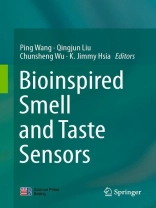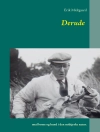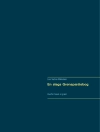This book discusses the field of bioinspired smell and taste sensors which includes many new areas: sensitive materials, physiological modelling and simulation, and more. Similar to biological chemical sensing systems, bioinspired smell and taste sensors are characterized with fast responsive, high specificity and sensitivity. One of the most important parts of the field is that of sensitive elements originated from biological components, which enable the detection of chemical signals by mimicking the biological mechanisms. This book detailed describes processing, devices, recognition principles of sensitive materials, and concrete realizations. It is written for researchers, engineers and biologists who engages in interdisciplinary research and applications.
Dr. Ping Wang is a professor at Zhejiang University, Hangzhou, China. Dr. Qingjun Liu is a professor at Zhejiang University, Hangzhou, China. Dr. Chunsheng Wu is an associated professor at Zhejiang University, Hangzhou, China. Dr. K. Jimmy Hsia is a professor at University of Illinois at Urbana-Champaign, Urbana, USA.
Spis treści
Introduction.- Electronic nose and electronic tongue.- Olfactory cell-based biosensors.- Olfactory epithelium-based biosensors.- Insect antenna-based olfactory biosensors.- Olfactory receptor-based biosensors.- Odorant binding proteins based biosensors.- DNA-mediated biomimetic olfactory sensors.- In-vivo olfactionbiosensing system.- Taste cell-based biosensors.- Taste epithelium-based biosensors.- Taste receptor-based biosensors.- Taste ion channel-based biosensors.- Biomimetic membrane-based taste biosensors.- In-vivo taste biosensing system.- Future Trends of the bioinspired olfaction and taste sensors.












